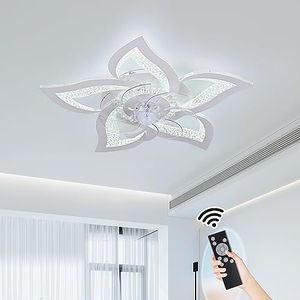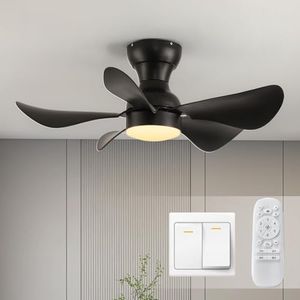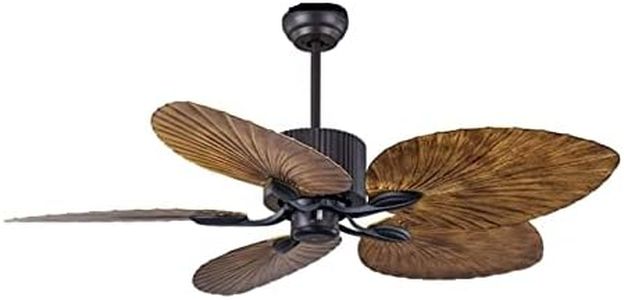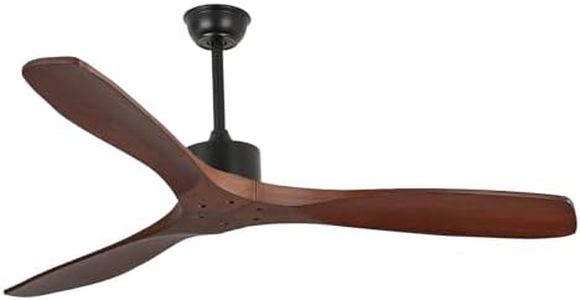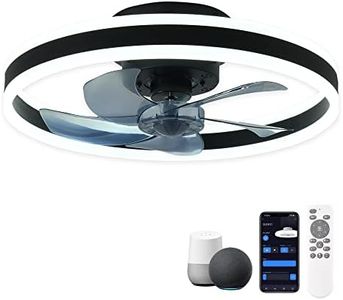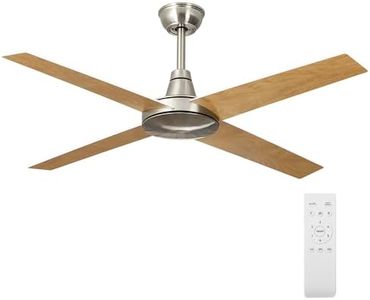We Use CookiesWe use cookies to enhance the security, performance,
functionality and for analytical and promotional activities. By continuing to browse this site you
are agreeing to our privacy policy
10 Best Outdoor Ceiling Fans
From leading brands and best sellers available on the web.By clicking on a link to a third party's website, log data is shared with that third party.
Buying Guide for the Best Outdoor Ceiling Fans
Choosing the right outdoor ceiling fan involves understanding your space, climate, and personal needs. Unlike indoor fans, outdoor ceiling fans must withstand weather conditions such as humidity, wind, and, in some cases, rain. Picking a fan designed specifically for outdoor use ensures safety and performance over time. Consider the area you want to cool, your style preferences, and how exposed the fan will be to the elements. A thoughtful balance of these factors will help you find a ceiling fan that is both effective and durable.Wet Rating / Damp RatingThis specification tells you how resistant the ceiling fan is to moisture and water. Wet-rated fans can handle direct exposure to rain and water, making them suitable for open patios, gazebos, or decks. Damp-rated fans, on the other hand, are built to resist humidity and moisture but not direct rain, so they are best for covered porches or sunrooms. It’s important to choose a wet-rated fan if your installation area is exposed, or a damp-rated one if the space is protected but may still get humid. Assess how much exposure to the elements your fan will have and pick the appropriate rating accordingly.
Blade MaterialFan blades are made from materials like plastic, treated wood, or metal, and what you choose affects durability. Outdoor fan blades must be able to resist warping, rusting, or fading due to moisture and sun exposure. Plastic and specially-coated materials typically hold up best in wet or humid environments, while certain treated woods can work for covered outdoor spaces. Consider how much sun and moisture your fan will face, and select blade materials that match those conditions for a long-lasting fan.
Fan Size (Blade Span)Blade span is the diameter of the fan from one blade tip to the opposite blade tip, and it determines the area the fan can effectively cool. Smaller spans (under 44 inches) are good for compact outdoor spaces, while medium (44–54 inches) fit standard patios, and larger spans (over 54 inches) are ideal for big decks or outdoor living areas. Decide the size based on your room or installation area; a fan that’s too small won’t adequately circulate air, while a fan that’s too large could be overwhelming or inefficient.
Motor Power and EfficiencyThe motor is the engine of your fan and affects how much air it can move and how quietly it operates. Strong, energy-efficient motors are important outdoors, where you might need more airflow due to open space. Motors are generally rated by airflow (measured in CFM, or cubic feet per minute). Higher CFM means more air movement. Think about how much airflow you need—larger, open areas or hotter climates may need higher CFM, while smaller or semi-enclosed spaces may only need moderate airflow.
Mounting TypeThere are a few different ways to install an outdoor ceiling fan, such as flush-mount (close to the ceiling), downrod (hanging), and angled mounts. Spaces with low ceilings need flush mounts for safety, while higher or sloped ceilings may require downrods or angled kits for optimal air circulation. Check the ceiling height and shape in your space and pick a mounting type that keeps the fan at least 7 feet above the floor and ideally 8–9 feet for best performance.
Light Kit CompatibilitySome outdoor ceiling fans come with built-in light fixtures or the option to add a light kit. This can be helpful if you want to brighten up your outdoor area in addition to cooling it. When deciding, consider whether your outdoor space needs extra lighting at night. If it does, look for a fan with integrated lighting or an option to add a light kit; if not, you may prefer a simpler design without a light.
Control OptionsOutdoor ceiling fans can be operated by pull chains, wall switches, or remote controls. Some models even allow for smart or app-based controls. Consider what’s most convenient for your setup: remotes are handy for larger spaces or if you want flexible control, while wall switches offer straightforward control indoors or in sheltered areas. If you’re tech-savvy or want integrated home automation, look for fans compatible with smart systems. Your preferred style of use should guide your choice here.
